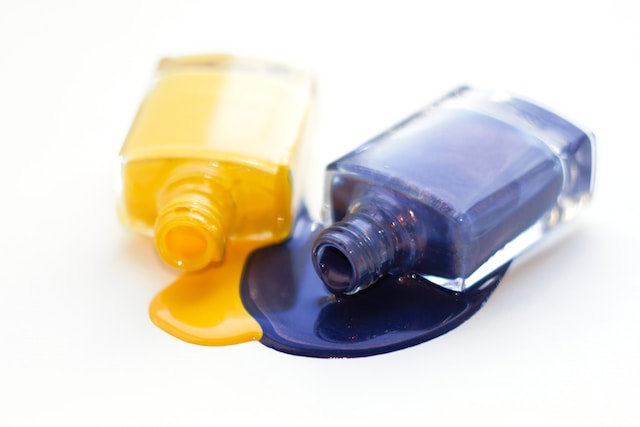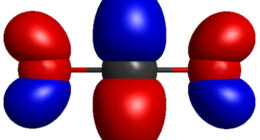Toluene and xylene are both aromatic hydrocarbon solvents used in a variety of industrial and commercial applications. The main difference between them is their molecular structure, with xylene having two methyl groups attached to the benzene ring compared to toluene’s single methyl group.
What is toluene?

Toluene is a clear, colorless liquid with a characteristic smell. It is a volatile organic compound (VOC) that is widely used as an industrial solvent and as a gasoline additive. Toluene is produced by the partial oxidation of benzene and is also found in crude oil and in the tolu tree.
What is xylene?
(Photo by Sven Brandsma on Unsplash )

Xylene is a colorless, sweet-smelling liquid that is used as a solvent in many industries. It is also found in gasoline and some paint thinners. Xylene is harmful if swallowed, inhaled, or absorbed through the skin. Short-term exposure to xylene can cause headaches, dizziness, confusion, loss of coordination, and unconsciousness. Long-term exposure can damage the liver, kidneys, and nervous system and cause cancer.
Toluene VS. Xylene – Key differences
Toluene and xylene are both aromatic hydrocarbon solvents with similar properties and applications, but there are several key differences between them.
Molecular structure: Toluene has a single methyl group attached to the benzene ring, while xylene has two methyl groups attached. This difference in structure can affect their physical and chemical properties, such as their boiling points and solubility.
Applications: While both toluene and xylene are used as solvents in a variety of industrial and commercial applications, they are often used for different purposes. Toluene is commonly used in the production of chemicals, pharmaceuticals, and gasoline, while xylene is often used as a solvent in the production of paints, varnishes, and adhesives.
Toxicity: Both toluene and xylene are toxic if ingested or inhaled, but toluene is generally considered to be more toxic than xylene. Exposure to toluene can cause a range of health effects, including headaches, dizziness, and nausea, while exposure to xylene can cause similar symptoms but is generally less toxic.
Environmental impact: Toluene and xylene are both volatile organic compounds (VOCs) that can contribute to air pollution and other environmental issues. However, toluene is considered to be a more potent contributor to these issues than xylene, and is subject to stricter regulations in many countries.
What is xylene used for?
Xylene is a versatile and widely used solvent with many industrial and commercial applications. Some of the most common uses of xylene include:
Paints and coatings: Xylene is used as a solvent in the production of paints, varnishes, and other coatings. It helps to dissolve and distribute the various pigments and resins used in these products, and can also be used to clean up spills or equipment.
Adhesives: Xylene is used as a solvent in the production of adhesives and sealants, where it helps to dissolve and distribute the various ingredients used in these products.
Cleaning: Xylene is an effective solvent for cleaning and degreasing equipment and machinery in many industries, including printing, electronics, and metalworking.
Medical and laboratory applications: Xylene is used as a clearing agent in histology and pathology labs, where it is used to help prepare tissue samples for microscopic examination. It is also used as a solvent for some types of medical and dental adhesives.
Other applications: Xylene is used in many other applications, such as in the production of insecticides, dyes, and synthetic fibers. It is also sometimes used as a fuel additive.
What is toluene used for?
Toluene is a highly versatile and widely used solvent in many industrial and commercial applications. Some of the most common uses of toluene include:
Paints and coatings: Toluene is used as a solvent in the production of paints, varnishes, and other coatings. It helps to dissolve and distribute the various pigments and resins used in these products.
Adhesives: Toluene is used as a solvent in the production of adhesives and sealants, where it helps to dissolve and distribute the various ingredients used in these products.
Chemical synthesis: Toluene is used as a starting material in the synthesis of many organic compounds, including plastics, synthetic rubber, and pharmaceuticals.
Fuel: Toluene is sometimes used as a fuel additive, especially in high-performance engines, to improve combustion and increase power output.
Cleaning: Toluene is an effective solvent for cleaning and degreasing equipment and machinery in many industries, including printing, electronics, and metalworking.
Other applications: Toluene is used in many other applications, such as in the production of explosives, dyes, and synthetic fibers. It is also sometimes used as a flavoring agent in foods and beverages.
How to choose the right solvent for your needs?
When it comes to choosing a solvent, there are a few key factors to keep in mind. The first is the boiling point of the solvent. This is important because you want to choose a solvent with a boiling point that is close to the temperature of your application. For example, if you are using a solvent to remove paint from a surface, you would want to choose a solvent with a boiling point that is close to the temperature of the paint (usually around 100°C).
The second factor to consider is the solubility of the solvent. This is important because you want to choose a solvent that will be able to dissolve the material you are trying to remove. For example, if you are trying to remove oil from a surface, you would want to choose a solvent that is highly soluble in oil.
Finally, you also need to consider the toxicity of the solvent. This is important because you don’t want to choose a solvent that is so toxic that it poses a risk to your health. For example, some solvents can be very harmful if inhaled, so it’s important to choose one that has low toxicity.
Can xylene be used in place of toluene?
Xylene and toluene are both aromatic hydrocarbon solvents that have similar properties and are often used interchangeably in many applications. However, there are some differences between the two solvents that can affect their suitability for certain uses.
In general, xylene is considered to be a slightly more powerful solvent than toluene, with a higher boiling point and a slower evaporation rate. Xylene is also slightly more expensive than toluene.
Whether or not xylene can be used in place of toluene depends on the specific application and the properties required for the solvent. In some cases, xylene may be a suitable replacement for toluene, while in other cases it may not be appropriate.
If you are considering using xylene in place of toluene, it is important to consult with a knowledgeable expert to determine if the substitution is appropriate for your specific needs. Additionally, it is always important to handle these solvents safely, as they can be harmful to human health and the environment if not used properly.
Featured Image By – Maria Lupan on Unsplash









